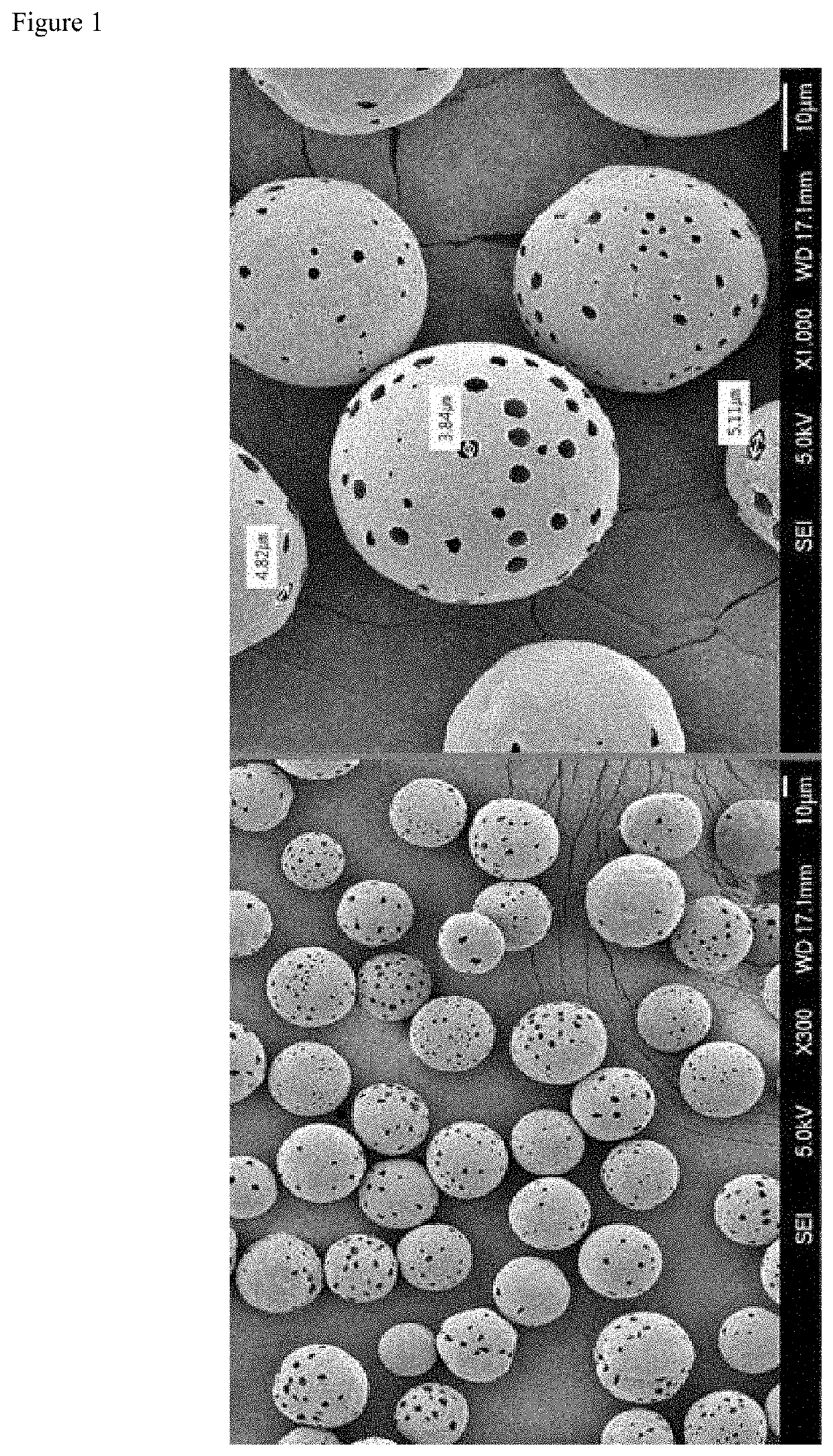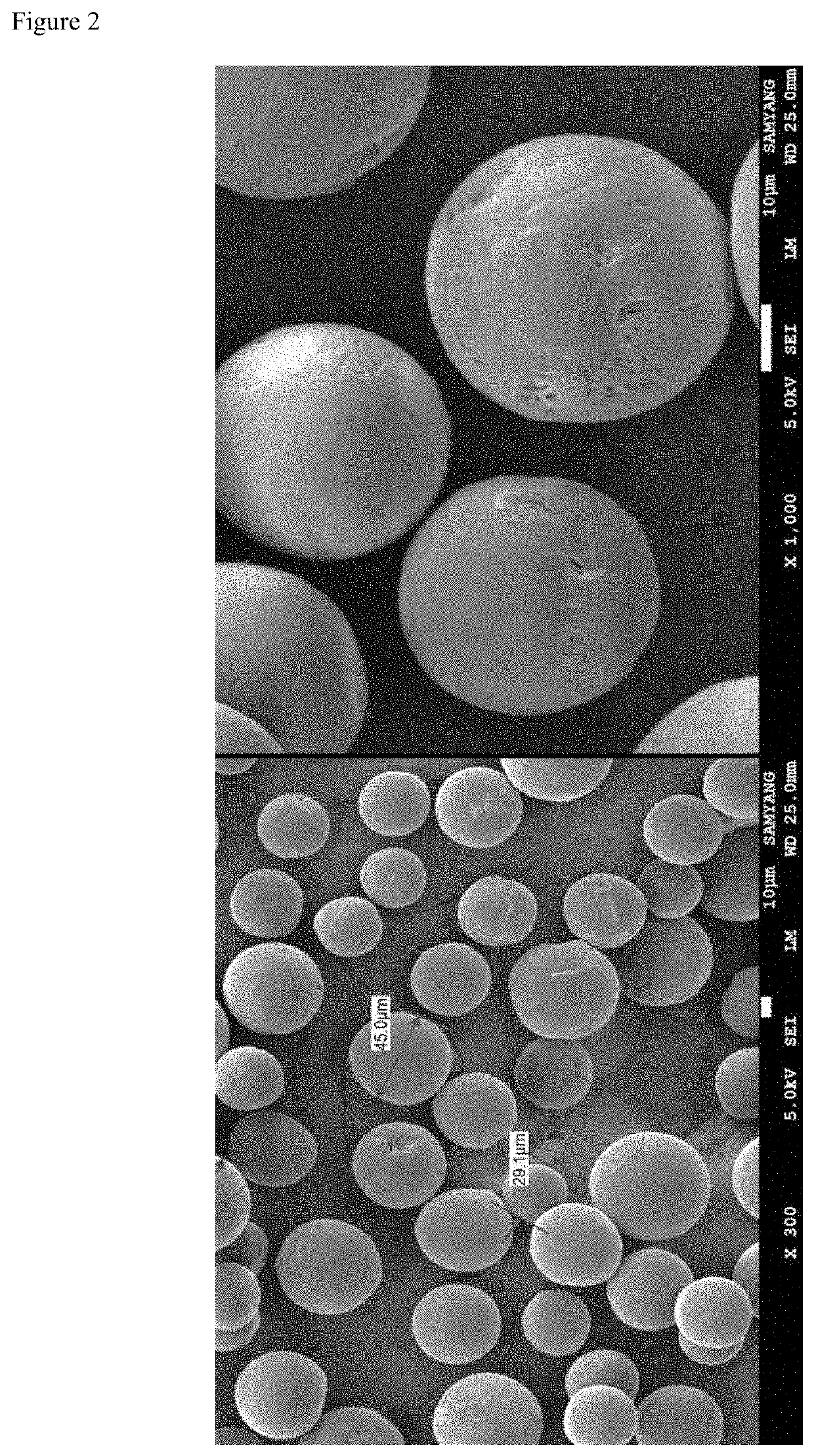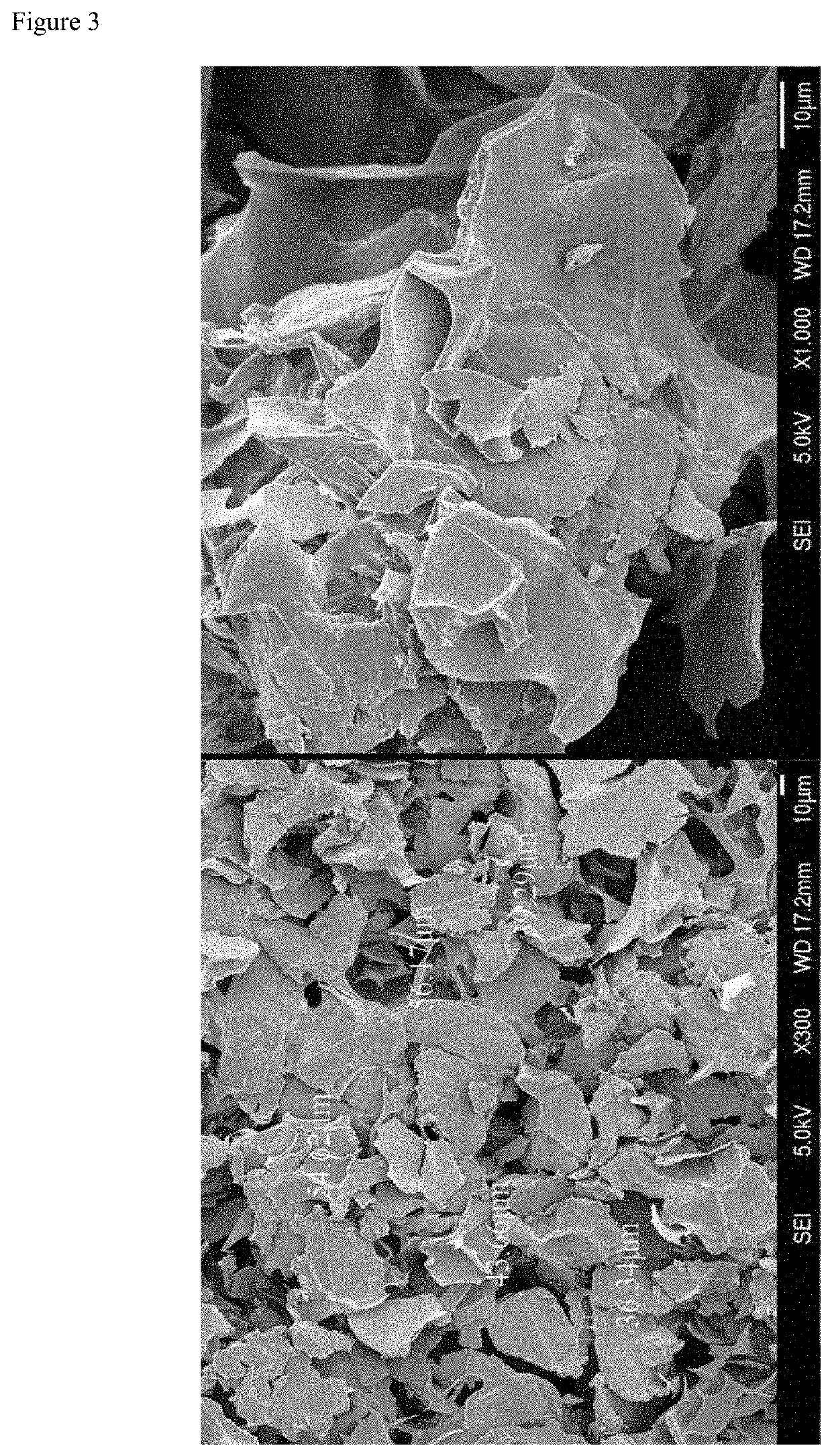Porous microparticles of biodegradable polymer, and polymer filler comprising same
a biodegradable polymer and porous microparticle technology, applied in the field of porous microparticles of biodegradable polymer and polymeric fillers comprising the same, can solve the problems of short retention time, no effect, allergic reaction to collagen, etc., and achieve the effect of minimizing pain and foreign body sensation, and reducing the number of particles
- Summary
- Abstract
- Description
- Claims
- Application Information
AI Technical Summary
Benefits of technology
Problems solved by technology
Method used
Image
Examples
example
Example 1
[0048]By using polycarprolactone (PCL) with a number average molecular weight of 50,000 g / mol, porous microparticles of biodegradable polymer (porosity ratio: 10%) in 20 to 40 μm diameter were prepared through a membrane emulsification method. That is, 1 g of the biodegradable polymer PCL and 0.2 g of tetradecane for pore formation were dissolved in 20 g of methylene chloride, and homogeneously mixed in a PVA aqueous solution to prepare porous microparticles of biodegradable polymer with porosity ratio of 10%.
[0049]The prepared porous microparticles of biodegradable polymer was mixed with a carrier prepared from 3% by weight of carboxymethyl cellulose, 27% by weight of glycerin and 70% by weight of phosphate buffer. At that time, the mixing ratio was, based on 100% by weight of the mixture, 30% by weight of the porous microparticles and 70% by weight of the carrier.
example 2
[0050]By using polycarprolactone (PCL) with a number average molecular weight of 50,000 g / mol, porous microparticles of biodegradable polymer (porosity ratio: 20%) in 20 to 40 pan diameter were prepared through a membrane emulsification method. That is, 1 g of the biodegradable polymer PCL and 0.3 g of tetradecane for pore formation were dissolved in 20 g of methylene chloride, and homogeneously mixed in a PVA aqueous solution to prepare porous microparticles of biodegradable polymer with porosity ratio of 20%.
[0051]The prepared porous microparticles of biodegradable polymer was mixed with a carrier prepared from 3% by weight of carboxymethyl cellulose, 27% by weight of glycerin and 70% by weight of phosphate buffer. At that time, the mixing ratio was, based on 100% by weight of the mixture, 30% by weight of the porous microparticles and 70% by weight of the carrier.
example 3
[0052]By using polycarprolactone (PCL) with a number average molecular weight of 50,000 g / mol, porous microparticles of biodegradable polymer (porosity ratio: 10%) in 20 to 40 μm diameter were prepared through a membrane emulsification method. That is, 1 g of the biodegradable polymer PCL and 0.2 g of tetradecane for pore formation were dissolved in 20 g of methylene chloride, and homogeneously mixed in a PVA aqueous solution to prepare porous microparticles of biodegradable polymer with porosity ratio of 10%.
[0053]The prepared porous microparticles of biodegradable polymer was mixed with a carrier prepared from 3% by weight of carboxymethyl cellulose, 27% by weight of glycerin and 70% by weight of phosphate buffer. At that time, the mixing ratio was, based on 100% by weight of the mixture, 40% by weight of the porous microparticles and 60% by weight of the carrier.
PUM
| Property | Measurement | Unit |
|---|---|---|
| Fraction | aaaaa | aaaaa |
| Percent by mass | aaaaa | aaaaa |
| Percent by mass | aaaaa | aaaaa |
Abstract
Description
Claims
Application Information
 Login to View More
Login to View More - R&D
- Intellectual Property
- Life Sciences
- Materials
- Tech Scout
- Unparalleled Data Quality
- Higher Quality Content
- 60% Fewer Hallucinations
Browse by: Latest US Patents, China's latest patents, Technical Efficacy Thesaurus, Application Domain, Technology Topic, Popular Technical Reports.
© 2025 PatSnap. All rights reserved.Legal|Privacy policy|Modern Slavery Act Transparency Statement|Sitemap|About US| Contact US: help@patsnap.com



